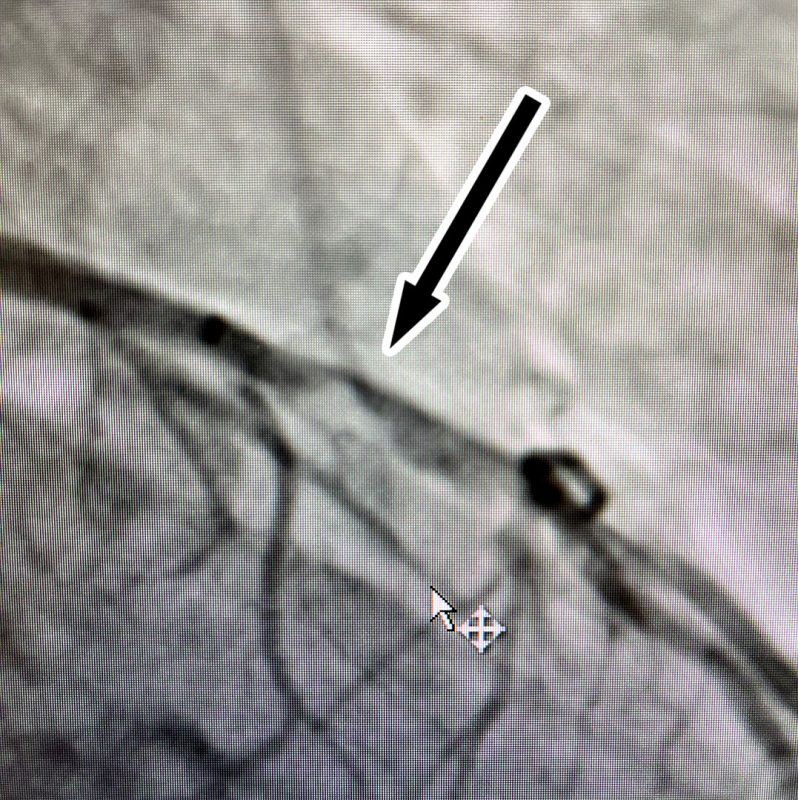In March of 2021, a 48-year-old male patient had metabolic syndrome and presented with angina pectoris (chest pain). The nuclear stress test in 2019 was normal. However, the coronary calcium score done in 2021 was 1450, which is severely elevated. In March 2021, we took him to the cardiac catheterization laboratory. He had extensive coronary calcification (plaque in his arteries), high-grade lesions noted in the right coronary artery and the two segments, a high-grade lesion in the circumflex trunk, and high-grade stenosis in the proximal left anterior descending artery.
The patient underwent successful stent placement of the right coronary artery and the circumflex artery. Because of the extensive calcification, the lesions were very calcified and noncompliant. This makes the blood vessel very stiff and difficult to expand fully.
The left anterior descending artery was the toughest lesion. The balloon was inserted into the lesion without difficulty. After filling the balloon, this clearly showed the classic dog bone effect, or bowtie appearance, because the balloon did not open like a straight sausage. The blockage in the middle portion did not allow the artery to expand fully. We could not eradicate the stenosis even with 20 atm of pressure and large balloons because the balloon would not fully expand. Therefore, a stent could not be placed in this lesion. The patient was placed on medical management and brought back to the hospital in August 2021 for a new treatment called intravascular lithotripsy or IVL therapy.











